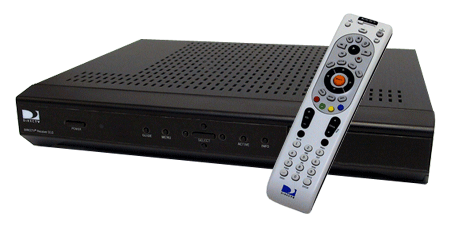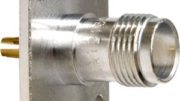Modern DIRECTV history starts in 2004… with the introduction of this receiver, the DIRECTV D10-100. Before this receiver, there were several different manufacturers. RCA made most of the low-priced ones, but Sony, Philips, Hughes and others all made satellite receivers with different capabilities. Even Microsoft got in the act with an early DVR.
While this meant a lot of choice for the customer — for example, RCA had models with Dolby Digital and without, with S-Video and without — it also meant a lot of confusion. There were different user interfaces, different settings, and that meant a nightmare for customer service reps in the early 2000s. Something had to be done, especially since DIRECTV had already started offering HD service and DVR service.
The solution was to bring user interface design in house, and for DIRECTV to come up with a series of standards for all manufacturers to use. The first receiver to be released through this new program was the D10-100. The “-100” was an indication of the manufacturer (RCA). There would later be a D10-200 and D10-300 as well.

This was the first receiver to have only the DIRECTV logo — no brand name — and with the now-common user interface still seen today on standard-definition receivers. (The image above is actually from the 2007 updated interface but it’s similar.)
This was also the first receiver to use DIRECTV’s Advanced Program Guide, which carries a lot more information and lets you see up to two weeks in advance.
At first, people didn’t like the lack of choice, but as DIRECTV shot to unheard-of success in the mid-2000s, it was clear that going with a standard interface was the right choice. As the D11 and D12 receivers came out, people found it easier to change a receiver and that added to customer satisfaction.
In 2005, the first DVR with the common DIRECTV interface came out. The DIRECTV R15 was not a hit right away but it evolved into a stable performer, until it was superseded by the R16.
The first HD receiver, the H10, had a short life since it wasn’t capable of seeing DIRECTV’s HD satellites launched in 2008. On the other hand, the receivers it spawned, the H20, H21, H23, H24, H25, and the HD DVR series (HR20 through HR24) all owe a lot to that receiver.
But of course, none of it would be possible without the lowly D10. More than any other, it was the receiver that set DIRECTV on the path it’s on today.





